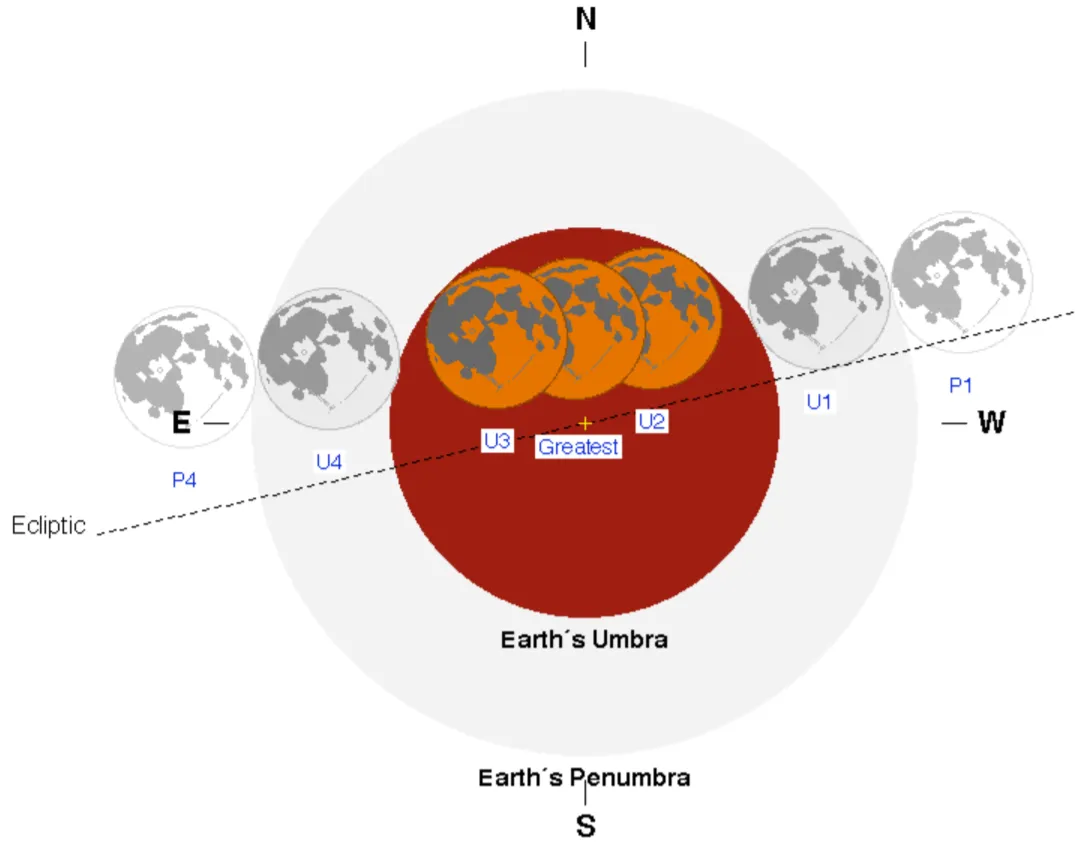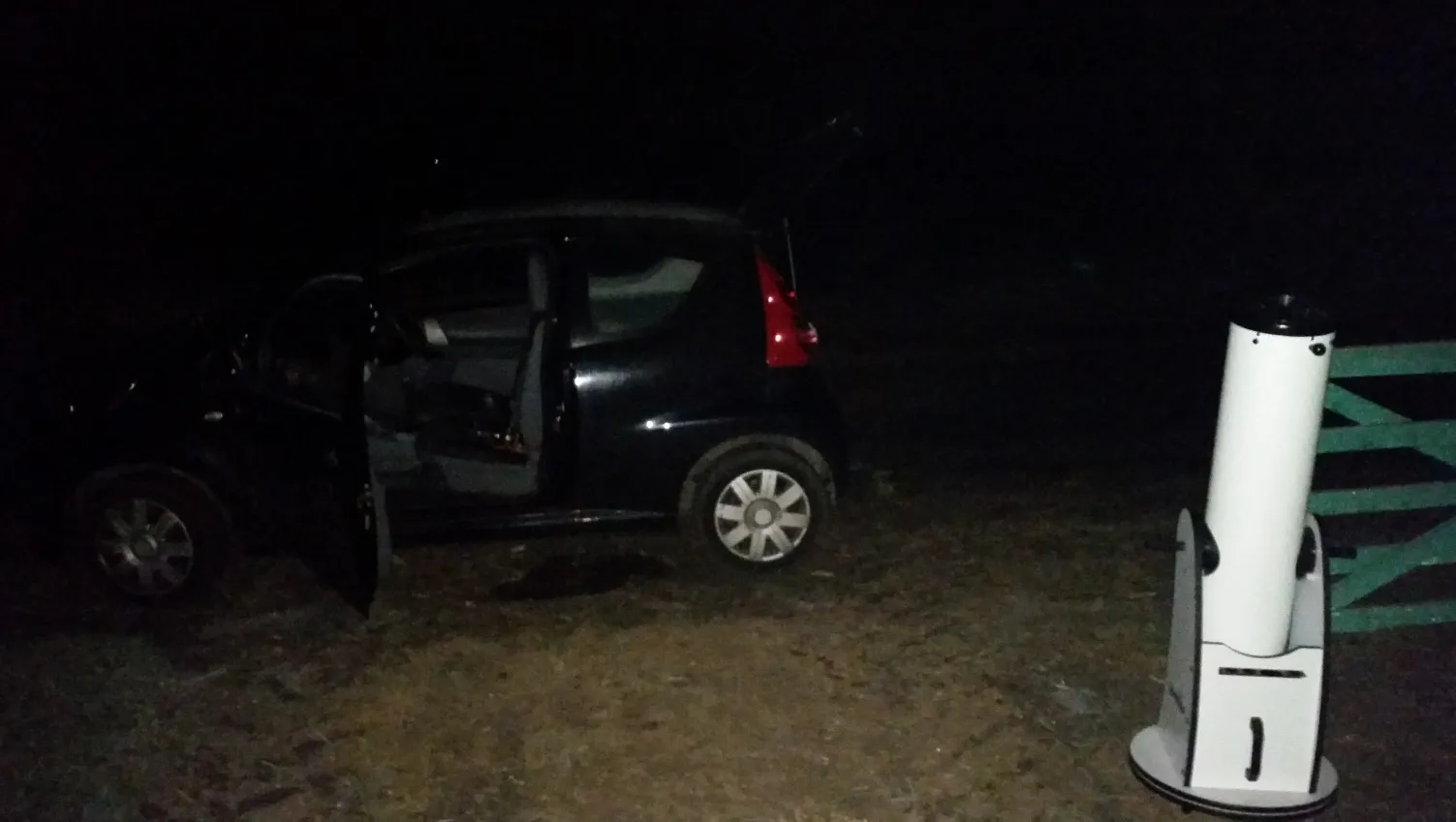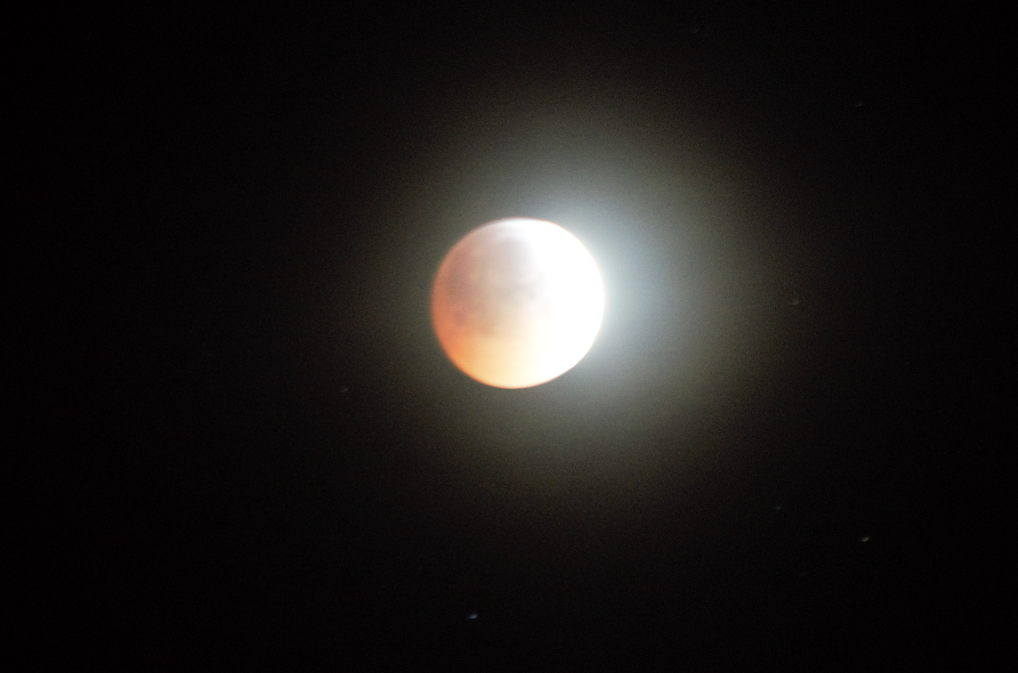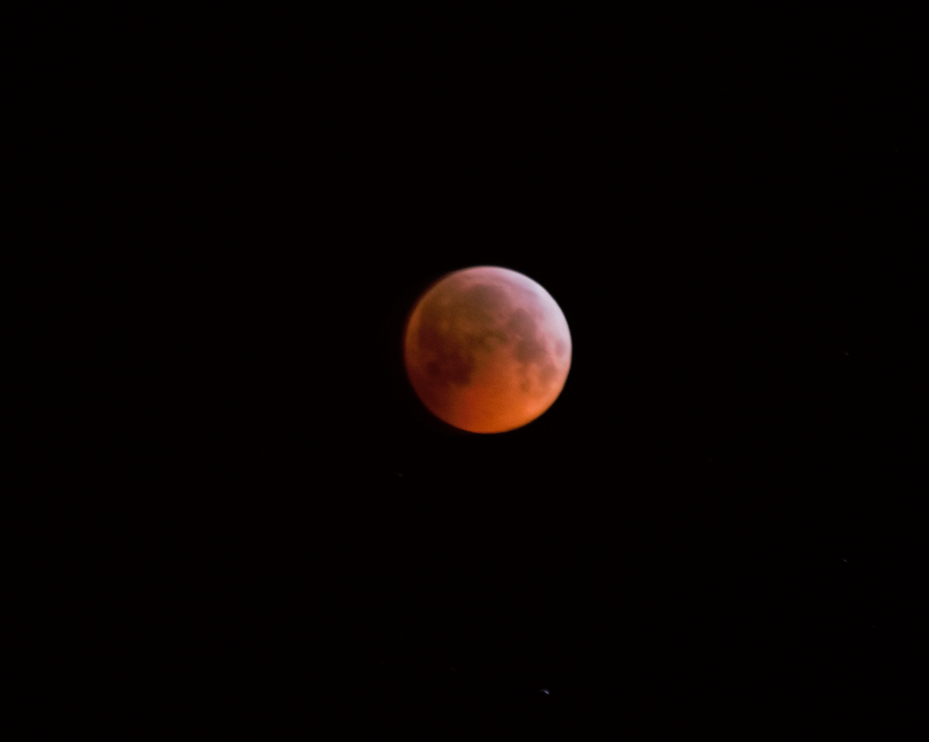A short adventure with lunar eclipse
A total lunar eclipse occurred recently on Monday 21st of January (Pic. 1). For me, it was the next opportunity to see this rare phenomenon, especially because I couldn’t make it in July 2018, due to thundery weather. This time the weather forecast seemed to be more favourable a few days before the eclipse, although as the eclipse night approached the forecasts were turning into a similar scenario. Finally, a day before the eclipse the weather maps were predicting a crapshoot, at least in the Cambridgeshire area, because further south-east was going to be better.

Pic. 1 Total lunar eclipse 21.01.2019 graph (Eclipse.gsfc.nasa.gov).
My observation plan was ambitious and too ambitious for the weather conditions. However, I will list my schedule, because maybe someone picks it up at the next total lunar eclipse occasion, which won’t happen soon. We must wait until 2021. Anyway, I was planning to observe:
- Sky brightness changes caused by the eclipse (the 3-5min period at lunar azimuth) – which was going to be a confirmation of my considerations, that arose out of the previous two total lunar eclipse observations. Unlike the most successful 2015 total lunar eclipse observation so far I had got a DSLR camera with Sigma f/1.8 lenses for this purpose.
- Recording the light transition occurrence produced by gradually hiding a lunar disk in the Earth’s shadow.
- Mapping the shadow movement at particular lunar locations i.e. Tycho Crater, recording the moments of time. I could do this through a Sky-Watcher 1200mm telescope borrowed from the Cambridge Astronomy Association.
- Creating an eclipse timelapse using a Nikkor 300mm long lens with 2-minute periods.
All this stuff required a big commitment and focus, so despite the slow progress of the eclipse, I was not planning to hang around even for a minute. Just in case of the worst weather I planned to change my location within some reasonable distance from home. For this reason, I planned to wake up as late as 2 a.m. bearing in mind, that my newborn daughter won’t let me sleep at all.
The weather verified my plans badly. Waking up from time to time I saw how the sky is becoming congested with low-level clouds. When I finally woke up at 1.30 am the sky was fully overcast. When I looked on the weather radar the clouds covered all area down to London and Southend area, making no point to go somewhere. However, at about 2 p.m. the sky suddenly cleared up, letting a Moon shine through. I unpacked my gear and went outside. Then a huge cloud covered the Moon, although an extended section of the clear sky moved in the eastern direction. I repacked my equipment in the car and left my house.
Firstly I stopped in Horningsea to make sure is really a necessity to waste precious eclipse time and go somewhere, when the weather is better? My weather app was showing a recently emerged big hole in clouds north of Cambridge, although it wasn’t accurate enough to tell me roughly where should I move or should I really drive somewhere at all. Being at Horninhsea for a while I spotted Moon shining through some small holes in the clouds. Thinking, that the weather is improving I set my equipment again and started watching the penumbral phase.

Pic. 2 My equipment is set near Horningsea, only for a while.
Unfortunately, the clouds with no mercy covered all the western parts of the sky eventually. Surprisingly I spotted clear skies far beyond the eastern horizon (Pic. 3, 4). It motivated me to go there.

Pic. 3 An extended clear section of the sky above the eastern horizon seen from Horningsea at 3.10 am, where: yellow arrow – thin stratocumulus clouds with a lot of smallish gaps, occurring much rarely towards the western part of the sky; blue arrow – clear blue sky white arrow – low stratus deck seen just above the horizon.

Pic. 4 An extended clear section of north-eastern sky seen from Horningsea (blue arrow) with a small yellowish glow from Soham seen roughly at the sharp edge of stratocumulus clouds (yellow arrow).

Pic. 5 Northern section of sky seen from Horningsea (towards Waterbeach) – no chance for clarity at all.

Pic. 6 Situation in Horningsea at 3.20 am – cloud gaps getting smaller, giving no chance for a fainting Moon appearance.
After taking my gear into the car I set, heading eastwards on the motorway towards Newmarket. The motorway was nearly empty at about 3.30 am so I could go fast with safely. From time to time I was taking a glance at the sky through a windshield. Passing by Newmarket I saw the stars with no clouds.

Pic. 7 Presumed cloud cover around 3.30 am against my escape route.
Awesome! I thought, but I had to go further, leaving the clouds behind, far from the western sky. Hurtling towards Bury St Edmund’s I spotted a partially eclipsed Moon in a right-side mirror. Then I started seeking the nearest junction, where I could turn out from a motorway somewhere onto a rural area. Finally, I reached Burrow village, just before Bury St Edmund’s. Going southwards I could admire a beautiful half-eclipsed Moon completely free of clouds. It was an awesome view. After a few kilometres of driving, I finally stopped behind the village. This time setting equipment again was a bit harder, due to increasing darkness. The moonlight was too faint to help me out with screwing up the telescope gear and tripod.

Pic. 8 Setting the gear near Burrow village.
Officially I started my observation at 4:05. Initially, I was watching the Moon through the telescope, and afterwards, I started to take some random pictures. Watching the eclipse through the lower eyepiece was a perfect experience. With nearly 110x enlargement I could see how the full shadow line is moving across the lunar disk. In this zoom, all celestial bodies move throughout a field of view quickly due to Earth’s rotation, which is multiplied proportionally by to zoom factor. However, an eagle eye can spot how the shadow velocity oversteps the “speed” of single craters being in the vicinity. Due to the lack of a Nikon adapter, I was trying to capture some images by smartphone. They were not sharp enough, though not as bad as I guessed before.


Pic. 10, 11 Partially eclipsed Moon as seen from Burrow; 300mm, f/5.6, ISO 3200 10s and 1s.

Pic.12 A full shadow line seen through a 9.7mm eyepiece in a 1200mm Skywatcher telescope. Captured by Samsung Galaxy S5 smartphone.
In general, I covered the moment of the biggest light dropping before P3 contact. Watching the last beam of moonlight I spotted approaching stratus clouds, which were strongly illuminated by Newmarket’s light glow. It made me rush and nervous. As a result, I was taking pictures in haste, without a decent positioning, making them not sharp enough eventually.

Pic. 13 Last beams of moonlight before total phase; 35mm, f/4.5, ISO 3200, cropped.

Pic. 14 Total lunar eclipse seen from Burrow village at 4:45 am with approaching stratus clouds, illuminated by Newmarket glow.


Pic. 15, 16 – Total lunar eclipse seen from Burrow village; 300mm, f/5.6, ISO 3200 and 1600.
In the meantime, I was watching the darkening Moon through the telescope and taking pictures on my smartphone (Pic. 17). First minutes of totality were very interesting. The Moon’s appearance contained basically 2 colours: a bluish – brighter one and a reddish – slightly darker. The bluish tint arises out of the thin Earth’s atmosphere which affects solar beams just after U2 or before U3 contact. As the totality at a particular part of the Moon is deeper, then this colour turns redder due to the thick Earth’s atmosphere affection. It works analogically to diffuse the sky radiation process, as we can observe every day on Earth. Shorter waves scatter blue light, longer and redder, about which I wrote more here. Anyway, this is only a simple conclusion, which will be more developed in the future.

Pic. 17 The total lunar eclipse seen through a 16mm eyepiece in a 1200mm SkyWatcher telescope, captured by a Samsung Galaxy S5 smartphone.
My observation of the total phase was shortened because of clouds, that approached about 4.55 a.m. For the next 10 minutes, I was watching the Moon through the thinner or thicker blanket of stratus, trying to take some photos. Once it disappeared I looked around and spotted a fleeting clear sky down towards the south-eastern horizon. I could see a rising Venus for a while when I was packing back my stuff again!

Pic. 18 Cloud deck covering a western section of sky with an eclipsed Moon at 5.05 a.m.

Pic. 19 Rising Venus with some bright stars in the Scorpius constellation seen above the south-eastern horizon at 5.05 a.m. The Blue arrow shows a visible clear section of the sky, which disappeared soon.
Having a recent real-time cloud cover in my app (Pic. 20,21). I decided to fight for the lasting halt, driving down through the villages south of Bury St Edmund’s, but this time in vain. Clouds covered the whole sky, even without any gap (maybe a small one at the zenith). The newest satellite imagery also showed, that a big hole in clouds was already gone at 5.25 a.m. and the closest region with clear skies was around Ipswich, twice further from my observation point. Because I couldn’t make it this time, even in a rush on the motorway (it was only 15 min left to the end of the total eclipse) I decided to retreat from further attendance.

Pic. 20 Cloudiness above East Anglia with observation venue marked.
At about 5.30 I terminated my fight with the weather and decided to back home. On the way down I was trying to see an eclipsed Moon through the windshield, but the clouds were too thick. Moreover, the weather became misty. On top of that, the road towards Cambridge was busy, so I had to be careful.
I was successful eventually, although with no reasonable observation result. My observation was quite messy and the photos were not good enough. Packing the equipment took too much time. Another attendant watching this occurrence with me would be beneficial. At least it was much better, than previously in July 2018, when I saw completely nothing.
For further circumstances such as this, I would like to give you a little advice once you set your observation point anywhere and suddenly found, that weather is not enough.
- Always check the real-time weather when possible. You can use this app, which is the best during night conditions,
- Prepare (fuel up) your car, because you never know how far are you going to drive,
- Organize your equipment as much as you can, to save your precious time on site. You don’t need to unfold everything and fold it again. If you have a bigger car, try to put a ready gear in and grip it sufficiently, making it safe,
- When arriving on-site and you are not sure about the weather try to look around first. Don’t put your gear out when you are unsure about the You can see what is happening in the sky and gauge the direction of cloud moving. Then look at the horizon and see if it is clear or not. Alternatively, you can use your camera and take a few pictures with longer exposure or higher iso, which show you a brighter sky with more details,
- Always drive safely, don’t put the celestial event on top of your health & life,
- Ask a buddy to go with you, because is always easier and quicker to unpack the gear
After the eclipse I saw the occurrence on a couple of webcams: in Edinburgh (Pic. 21) and Tenerife (Pic. 22), when the weather was nice.

Pic. 22 Setting Moon in the penumbral phase of the eclipse, seen from Tenerife at 7.05 UTC (Deckchair.com).
Thanks to the Tenerife webcam I could fill up the last remote lunar eclipse observation, watching the moonlight reflection on the Atlantic Ocean surface (Pic. 23). I found that lunar beams started to be visible about 20 min after U3 contact. The details of my observation can be seen below. Maybe you will do better watching with the use of more ISO-sensitive devices in the future.

Pic. 23 Moonlight reflection on the Atlantic Ocean surface is seen from Tenerife during the reverse sequence of the lunar eclipse (Deckchair.com). Other remote observations of the lunar eclipse are here.
Now remains nothing like waiting until the next total lunar eclipse, which will occur in 2021. There will be quite a few partial and penumbral, although I won’t be able to hit my observation target from top to toe. Anyhow is still a good opportunity to watch the Moon in various eclipse configurations, which I wish you all with a very heavy heart.
Mariusz Krukar
Links:
Youtube:
Read also:
- Remote observation of the total lunar eclipse
- First time in the shadow
- Deep partial eclipse in Scotland
- Transit of Venus – have you seen this celestial event?
External readings:

